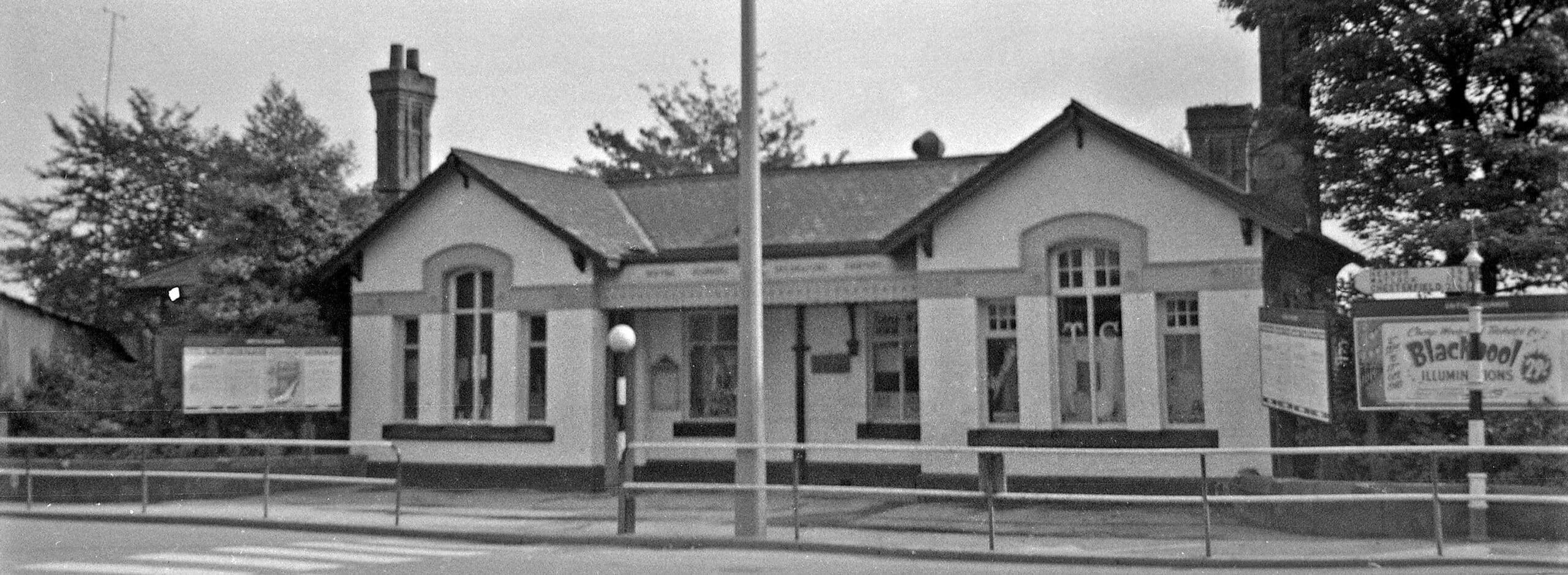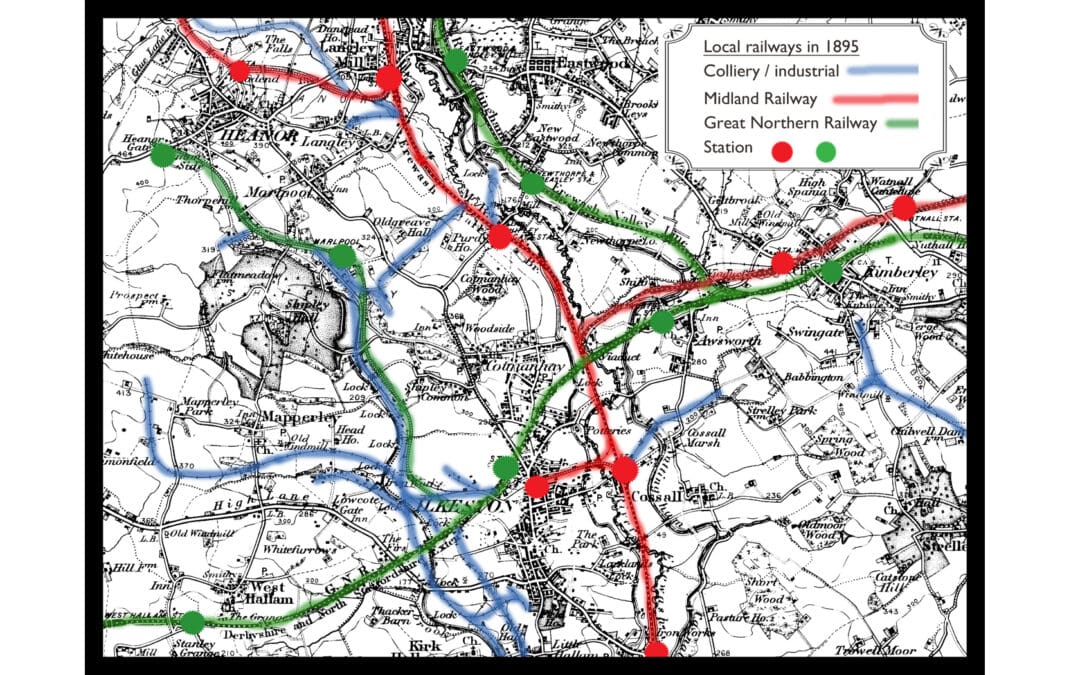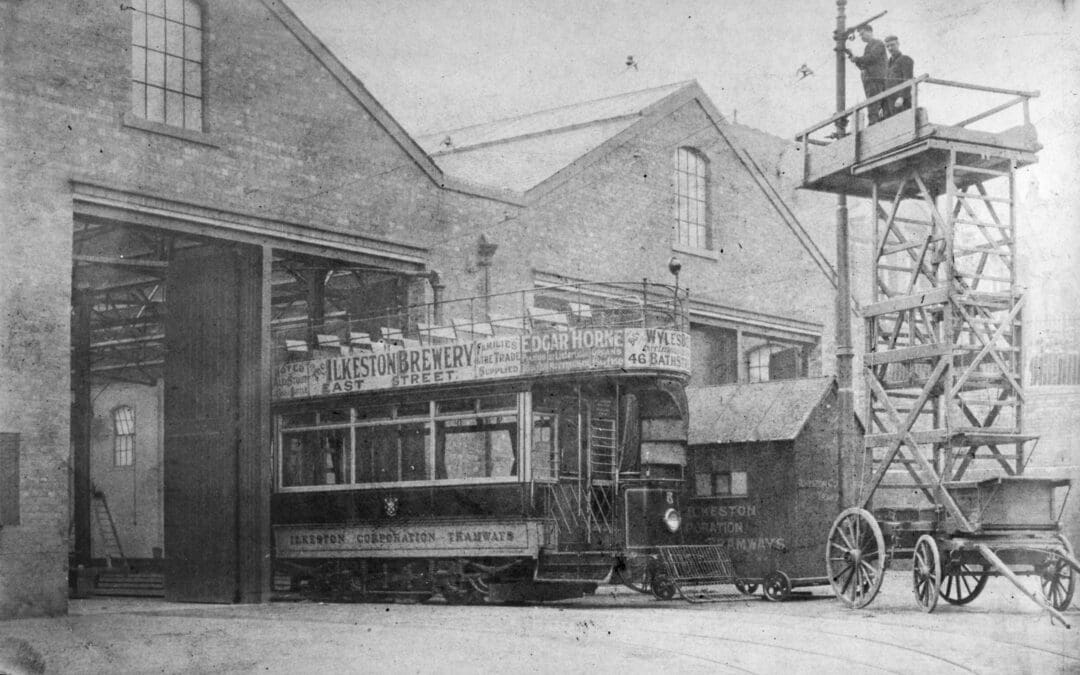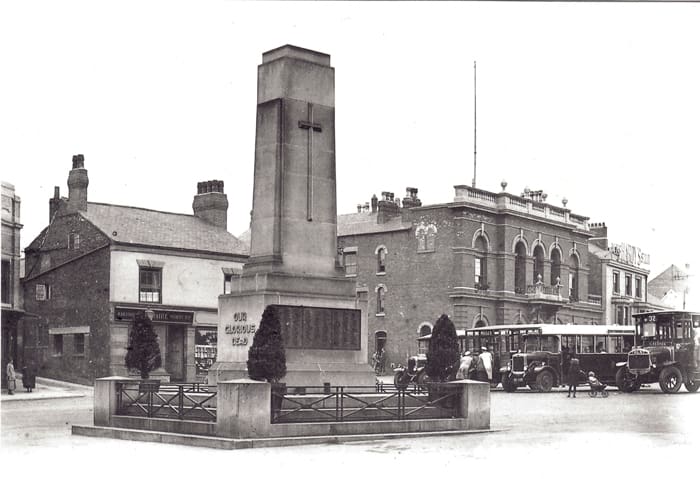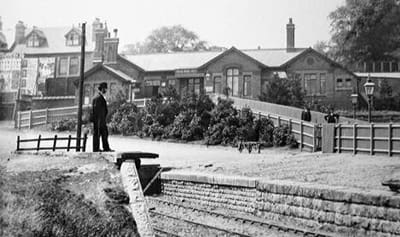
Situated at the bottom of Bath Street, Ilkeston Town Station stood roughly where the large traffic island now stands. The goods yard and long platform stretched out eastwards through the modern ‘Tesco’ store. There was a level crossing and signal box and a footbridge further down near the present roundabout on Rutland Street.
As the Erewash Valley line bypassed Ilkeston, the Midland Railway created one of the shortest branch lines in the country from Ilkeston Junction Station to Ilkeston Town. This three-quarters of a mile long branch followed the approximate route of the present-day Millership Way, eventually turning south to meet the main line. A north curve was later added to allow traffic in either direction.
Passenger facilities were basic to say the least when the station opened in 1847; letters of complaint regarding the waiting ‘hut’ appear in the local newspapers, the Ilkeston Pioneer being most vocal in its criticism. The muddy conditions outside the station and the ‘slough pond’ which appeared at the end of Bath Street in wet weather contributed to users’ disquiet. In addition, private mineral railways crossed the bottom of Bath Street to parallel the branch line just south of the station – one from the Butterley Company’s ironstone workings following the route of Manners Road – and this added to the danger and confusion.
The branch was worked by horse-drawn trains for several years and a potentially serious accident occurred in 1855 when horse and carriage parted company and the carriage crashed into a siding . Town Station seems never to have been very well used except on special occasions, most passengers preferring to use Ilkeston Junction rather than to wait for two trains, the line usually being operated by a shuttle service. The Midland seemed deaf to users’ criticism and closed the station entirely on 2nd May 1870.
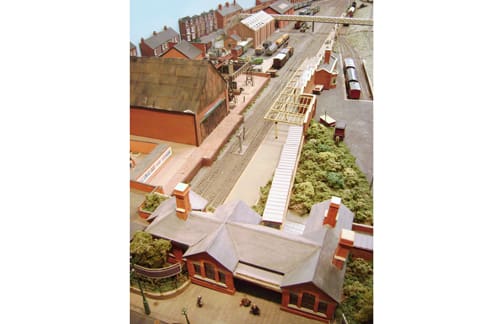
The arrival of the Great Northern Railway with its more convenient travelling times to Nottingham and Derby prompted the MR into action and they reopened Ilkeston Town Station and branch on 1st July 1879. The facilities were rebuilt on a more appropriate scale and a large goods yard was also constructed with its own office and shed adjoining Rutland Street, with a dedicated cattle dock, also fronting Rutland Street. The Butterley Company’s mineral line crossing Bath Street had fortunately been removed by about 1880. Some trains now called in at Ilkeston Town on their way up or down the main line, which involved the tedious process of the engine having to ‘run round’ from one end of the train to the other each time. However, the 1938 timetable shows eighteen departures a day, so someone must have been using it between the wars.
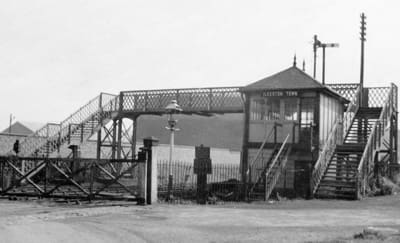
Passenger service was suspended during the fuel crisis of 1947 and was never re-instated. The station buildings went into a decline. The goods yard continued to work but its use fell until the branch’s official closure date of 15th June 1959. The site became something of a local eyesore, with both the Ilkeston Advertiser and the Ilkeston Pioneer campaigning for something to be done about it.
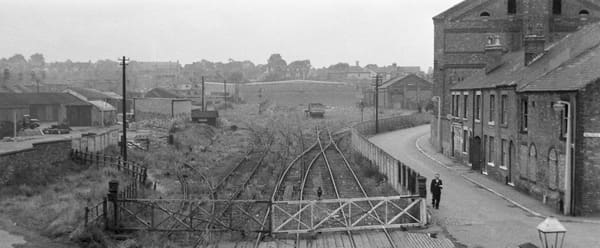
The Pioneer reported on 23rd October 1959 that the site was finally about to be cleared, partly following a plan to build a relief road for Ilkeston. That project had to wait many years, but the Midland General Omnibus Company bought the site and built a 50-bus garage on it which worked until the eventual building of Chalons Way, when it was demolished, and the large traffic island and Tesco superstore took its place.

